In a mineral processing plant individual pieces of comminution equipment are almost never used alone, but rather appropriate“stages” of size reduction are used in a plant to transform the material from the run-of-mine size to the final product size and then go to beneficiation stage such as flotation machine, gravity machine, magnetic equipment etc . The appropriate selection of equipment on a stage-by-stage basis is determined by feed size, ore type, tonnage, and final product size. Table 1 lists the size ranges within which various comminution methods operate most efficiently. The fact that the inherent efficiency of some devices is higher than others causes circuit designers to select equipment that produces a favorable overall efficiency.

Table 1. Normal size range and approximate energy efficiencies for various devices
In addition to taking into account inherent device efficiency in circuit design, the use of interstage size separation equipment will be shown in this section. A key aspect of achieving high overall efficiency is to remove product size material as soon as possible after it is created. Material that is already “finished” takes up energy and interferes with the breakage of coarse particles. In addition, the finished material becomes overground. Thus efficient size separation using screens, hydrocyclones, and other classifiers is a critical part of circuit design. Some typical crushing and grinding circuits are shown in Figures 1 to 5.
Figure 1 shows a circuit that takes run-of-mine size material (up to 1,000-mm pieces) through three stages of crushing to result in a product of 10 mm. Grizzlies with large spacings are sometimes used to protect the primary (gyratory) crusher from extremely large rock pieces and other foreign matter that might disrupt its operation. Primary crushers are almost always operated in open circuit (without a size separation step to return oversize material). The primary crusher product usually goes into coarse ore storage to buffer the other size reduction steps against big variations in mine production. The two secondary cone crushers are operated in closed circuit with screens to improve their efficiency and to control the top size into the three tertiary (also cone) crushers.
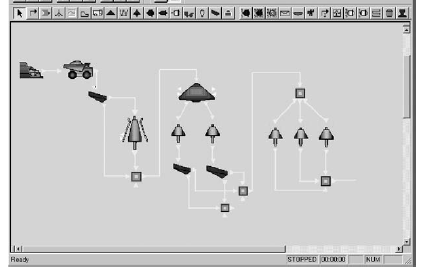
FIGURE 1. Primary, secondary, and tertiary crushing circuit
Figure 2 shows a typical grinding circuit, which may follow the circuit in Figure2. Here, the tertiary crusher product (10–15 mm) is fed to a rod mill (operated in open circuit) to yield a discharge of 3–6 mm followed by a ball mill operated in (reverse or pre-) closed circuit with a cyclone cluster. The cyclone overflow contains a product in the range of 0.2 to 0.05 mm.
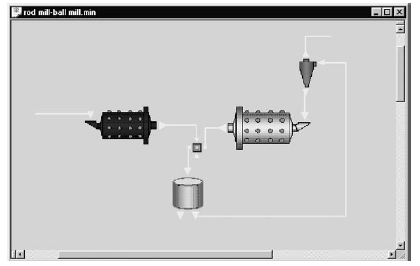
FIGURE 2 Rod mill and ball mill circuit
Figure 3 shows a primary ball mill circuit. In this case, a tertiary crusher product is fed to the ball mill. The ball mill discharge flows into a sump that is in turn pumped to the cyclone cluster for normal or postclassification. The coarse stream is returned to the sump and the fine stream forms the product.
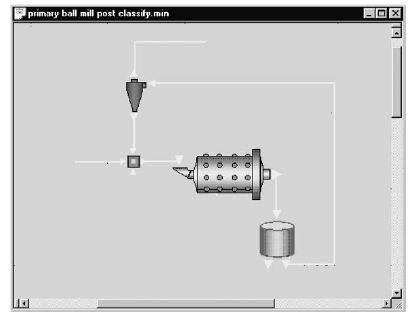
FIGURE 3 Single-stage ball mill circuit
Figure 4 shows an alternative to the more conventional circuits presented above. In this case, primary crusher product comes to an autogenous/semiautogenous mill via a coarse-ore stockpile. The crusher product is ground in a single stage and the product postclassified with a hydrocyclone. Advantages of this circuit are that it eliminates two stages of crushing and one stage of grinding.
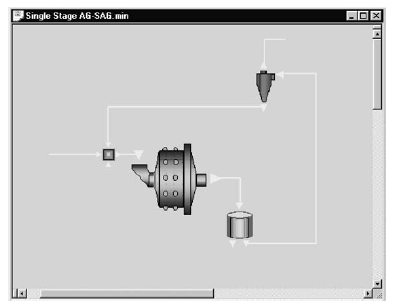
Figure 5 shows a modification of a standard autogenous/semiautogenous grind for ores that produce “hard-to-grind” pebbles. These pebbles are fed to a cone crusher rather than just returning them to the mill where they may build up, overloading the mill.
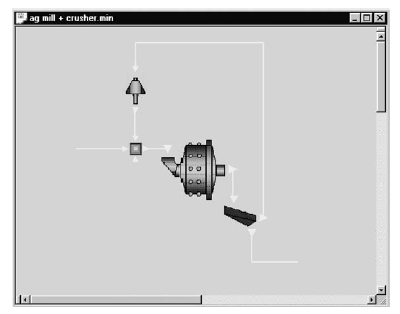
FIGURE 5 Autogenous/semiautogenous circuit with pebble crushing
Many other circuits options exist, especially those involving stirred mills for finer grinding and pregrinding treatments with high-pressure grinding rolls.